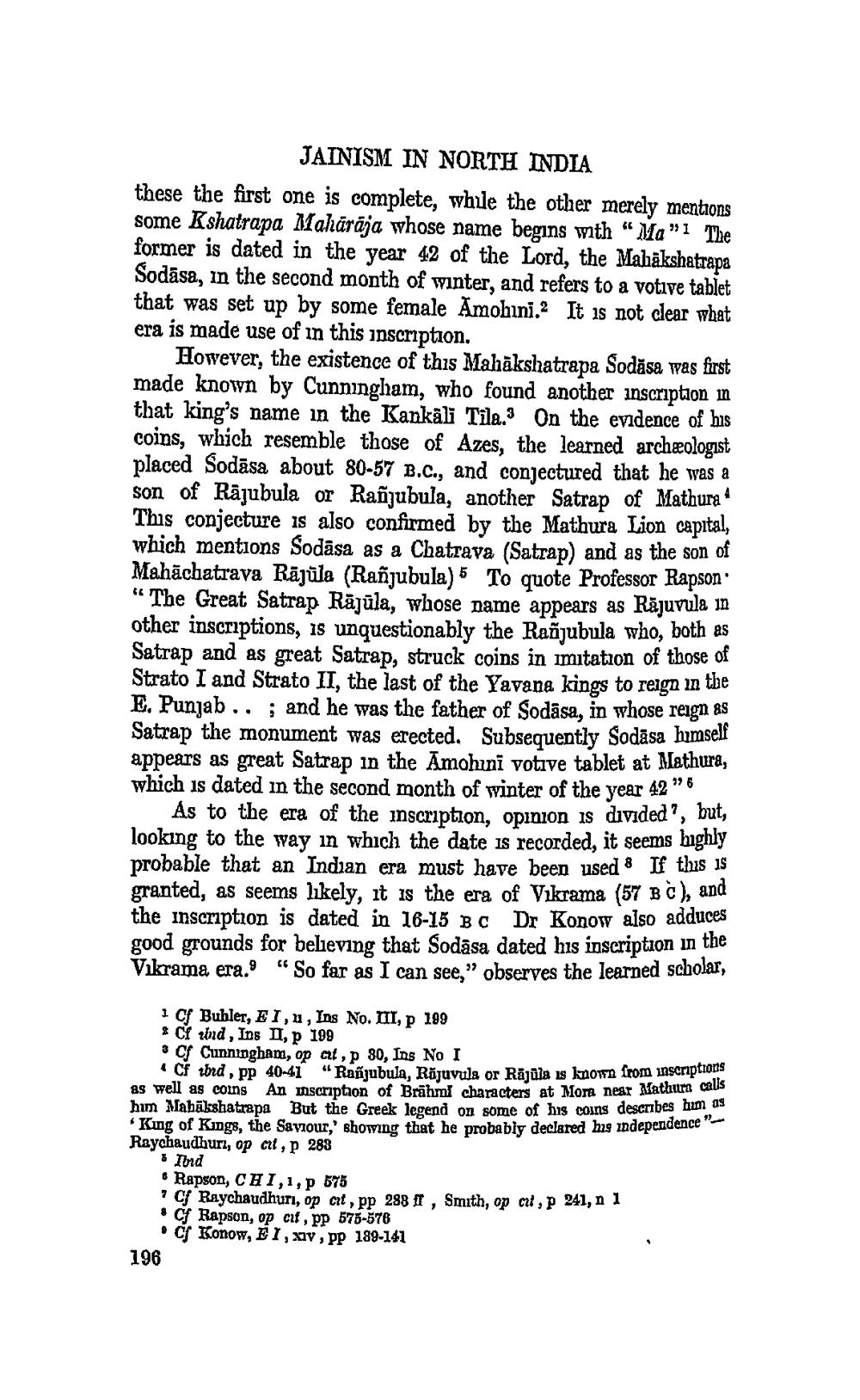________________ JAINISM IN NORTH INDIA these the first one is complete, while the other merely mentions some Kshatrapa Maharaja whose name begins with "Ma" 1 The former is dated in the year 42 of the Lord, the Mahakshatrapa Sodasa, in the second month of winter, and refers to a votive tablet that was set up by some female Amohini.? It is not clear what era is made use of in this inscription. However, the existence of this Mahakshatrapa Sodasa was first made known by Cunningham, who found another inscription in that king's name in the Kankali Tila. On the evidence of his coins, which resemble those of Azes, the learned archaeologist placed Sodasa about 80-57 B.C., and conjectured that he was a son of Rajubula or Ranjubula, another Satrap of Mathura * This conjecture is also confirmed by the Mathura Lion capital, which mentions Sodasa as a Chatrava (Satrap) and as the son of Mahachatrava Rajula (Ranjubula) 5 To quote Professor Rapson. "The Great Satrap Rajula, whose name appears as Rajuvula in other inscriptions, is unquestionably the Raojubula who, both as Satrap and as great Satrap, struck coins in imitation of those of Strato I and Strato II, the last of the Yavana kings to reign in the E. Punjab..; and he was the father of Sodasa, in whose reign as Satrap the monument was erected. Subsequently Sodasa himself appears as great Satrap in the Amohini votive tablet at Mathura, which is dated in the second month of winter of the year 42" As to the era of the inscription, opinion is divided', but, looking to the way in which the date is recorded, it seems highly probable that an Indian era must have been used 8 If this is granted, as seems likely, it is the era of Vikrama (57 BC), and the inscription is dated in 16-15 BC Dr Konow also adduces good grounds for believing that Sodasa dated his inscription in the Vikrama era. "So far as I can see," observes the learned scholar, 1 Cf Buhler, EI, n, Ins No. TII, P 199 2 Ci rod, Ins II, 199 * Cf Cunningham, op at ,p 80, Ins No I Cf tod, PP 40-41 "Raojubula, Rojuvula or Rajuta is known from inscription as well as coins An mscription of Brahini characters at Mora near Mathum caus him Mabakshatrapa But the Greek legend on some of his coins describes own "King of Kings, the Saviour,' showing that he probably declared his independence" Raychaudhury, op cit, p 283 Ind * Rapson, CHI,1, p 575 "Cf Raychaudhuri, op art, pp 298 11, Smith, op cit, 241, n 1 * Cf Rapson, op cit, pp 575-576 .ci Konow, Ery, pp 189-141 196




